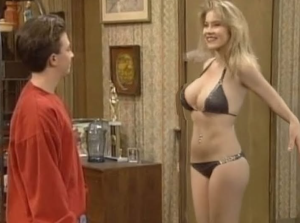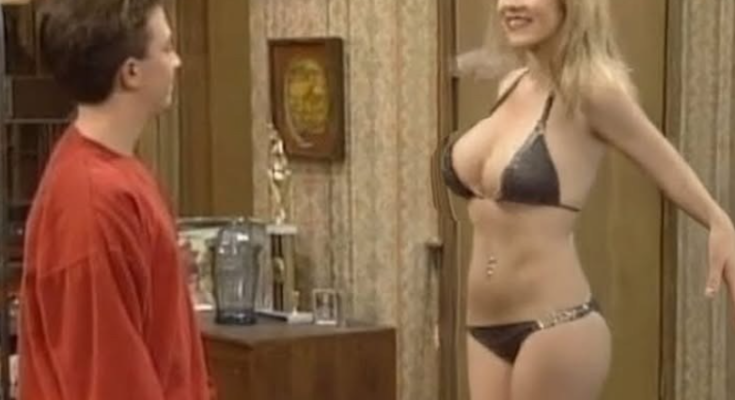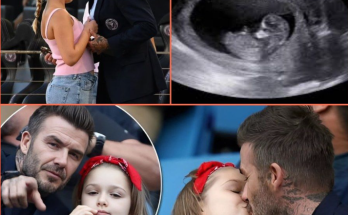
“The Weight of Grace”
In the heart of Phnom Penh, beneath the flickering neon of a beauty salon called Eclipse, sat a woman named Vanna. She was impossible to ignore—not because she demanded attention, but because her presence unsettled people. She was tall, with a posture that dared the world to look away. Her breasts were large, full, and unapologetically visible beneath her silk blouse. And though she never spoke of them, everyone else did.
Some whispered that she was lucky. Others said she was cursed. A few men stared with hunger; a few women with envy. But no one asked her what they meant to her.
Vanna had learned early that her body was a conversation she didn’t consent to. At thirteen, she was already being told to cover up. At fifteen, her teacher asked her to sit in the back so she wouldn’t “distract the boys.” At seventeen, she was followed home by a man who said, “You carry desire in your chest.”
She didn’t understand what that meant. She only knew that her body had become a billboard for other people’s projections.
Her mother, Dara, had once told her, “Your breasts are a gift. They mean you are fertile, strong, desirable.”
Vanna had nodded, but inside she wondered: What if I don’t want to be any of those things?
She had read somewhere that large breasts were associated with nurturing, with motherhood, with femininity. In spiritual traditions, they symbolized abundance, sustenance, even divine grace. But Vanna didn’t feel divine. She felt heavy.
Not just physically—though the back pain was real—but emotionally. Her breasts had become a metaphor for everything she couldn’t say. They were the reason she was hired at the salon, the reason customers lingered, the reason her boss told her, “Smile more. You’re our best advertisement.”
She smiled. But it was the kind of smile that hides teeth.
One evening, a customer named Lina came in. She was small, angular, with a sharp bob and sharper eyes. She asked for a haircut, then stayed for a conversation.
“You’re beautiful,” Lina said, not as a compliment, but as a fact.
Vanna shrugged. “Beauty is a costume.”
Lina tilted her head. “And what are you hiding beneath it?”
Vanna hesitated. No one had ever asked her that.
“Myself,” she said finally.
Lina nodded. “I know the feeling.”
They talked for hours. Lina was a sculptor, obsessed with form and distortion. She said breasts were the most misunderstood part of the human body—worshipped, mocked, feared, commodified.
“They’re not symbols,” Lina said. “They’re stories.”
That night, Vanna dreamed of her younger self—standing in front of a mirror, binding her chest with a scarf, trying to disappear. She woke up crying.
She called Lina the next day.
“I want to tell my story,” she said.
Lina invited her to her studio. It was cluttered, chaotic, alive. Clay figures lined the walls—some elegant, some grotesque, all unapologetic.
“I want you to sculpt your truth,” Lina said.
Vanna stared at the block of clay. Her hands trembled.
She began slowly—shaping curves, indentations, asymmetries. She didn’t try to make it beautiful. She made it honest.
The sculpture was raw. Her breasts were exaggerated, but not sexualized. Her face was stern, her posture defiant. She called it Burden and Bloom.
Lina exhibited the piece at a local gallery. Reactions were mixed. Some called it provocative. Others called it brave.
One man asked, “Is this feminist?”
Vanna replied, “It’s human.”
A woman approached her after the show. She was older, with a hunched back and eyes full of memory.
“I used to hate mine,” she said, gesturing to her chest. “They made me feel like a target.”
Vanna nodded. “Mine made me feel like a myth.”
The woman smiled. “But you’ve made them into a monument.”
Word spread. Vanna was invited to speak at a university panel on body image. She stood before a room of students and said:
“Large breasts don’t mean what you think they mean. They don’t mean I’m easy. They don’t mean I’m confident. They don’t mean I’m maternal. They mean I have a body. That’s all.
“But because the world insists on meaning, I’ve decided to give them mine. They mean I’ve survived shame. They mean I’ve learned to carry weight—literal and metaphorical. They mean I’ve turned discomfort into art.”
The room was silent. Then someone clapped. Then everyone did.
Vanna returned to Eclipse the next day. Her boss asked her to wear a tighter blouse for a new promotion.
She quit.
She opened her own studio—Form & Flame. It was a place for women to sculpt their stories, to reclaim their bodies from metaphor and myth.
One girl sculpted her scars. Another sculpted her stretch marks. One woman sculpted her mastectomy, calling it Victory in Absence.
Vanna sculpted herself again. This time, her breasts were not exaggerated. They were simply there—part of her, but not all of her.
She called it Grace Without Permission.
And so, the woman whose breasts had once been a burden became a beacon. Not because she changed her body, but because she changed the narrative.
She taught others that meaning is not inherited—it’s created.
And in the quiet of her studio, surrounded by clay and courage, she whispered to herself:
“I am not a symbol. I am a story.”

